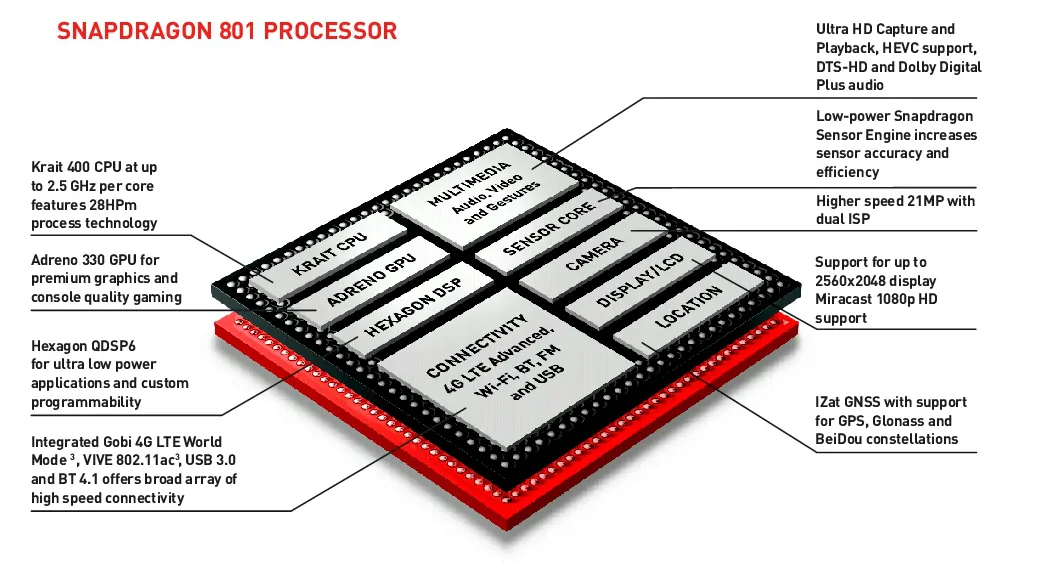With all the leaks and soft announcements the last couple of days, you might be slightly surprised finding out that the Mobile World Congress only officially opened its doors earlier this morning. One of the first pieces of news to catch up on is Qualcomm’s announcement of their new flagship chip : the Snapdragon 801. The Snapdragon 801 is a reworking of the Snapdragon 800 design that powers almost all the current flagship handsets, from Samsung’s Note 3 to Sony’s Z1 and the Nexus 5. You can expect the 801 chip to be included in the upcoming handset announcements from most, and it’s already made its debut in Sony’s Xperia Z1. After all, no one want’s to purchase a new handset with last-years tech, do they?
Like the Snapdragon 800, the 801 has four cores based on Qualcomm’s own 32-bit Krait 400 architecture and ‘shares software and pin-compatibility’ with it’s predecessor; which means that any upcoming device that is designed to use the 800 will be able to accept the 801 chip. Sadly, it almost certainly doesn’t mean that we can take our phones apart to insert the upgraded chip in place of the 800, so put those soldering irons away.
So what’s the difference between the Snapdragon 800 and 801 chips? Well, for one thing the 801 chip is slightly faster. The 801 has been tweaked to deliver higher clock speeds; where the 800 had a limit of 2.36 GHz, the 801 comes in at 2.45 GHz, the Adreno 330 GPU sees an increase in performance from 450MHz to 578MHz and the chip’s memory bus is boosted from 800MHz to 933MHz. eMMC support is upgraded to version 5.0 from 4.50, which includes a new HS400 mode that offers additional improvement in terms of interface speed (up to 400 MB/s vs 200 MB/s in the prior version, and hopefully means the end of storage getting laggy when close to capacity.
The performance increase of each of the individual design changes is small and rather incremental, but added together the changes should make for a (barely)noticeable increase in performance. This is by no means a revolutionary chip design, but, it isn’t supposed to be. Rather it’s an evolution of the popular Snapdragon 800 chip that’s had its motor tuned and optimized in order to enhance its performance without upstaging the forthcoming 805 design which is due out later in the year.
One of the first flagships to utilise the Snapdragon 801 chip is Sony’s Z2 handset, which has just been revealed at MWC 2014 and you can read about that here. As always, feel free to comment in the section below, or come join us at our Google Plus page.
